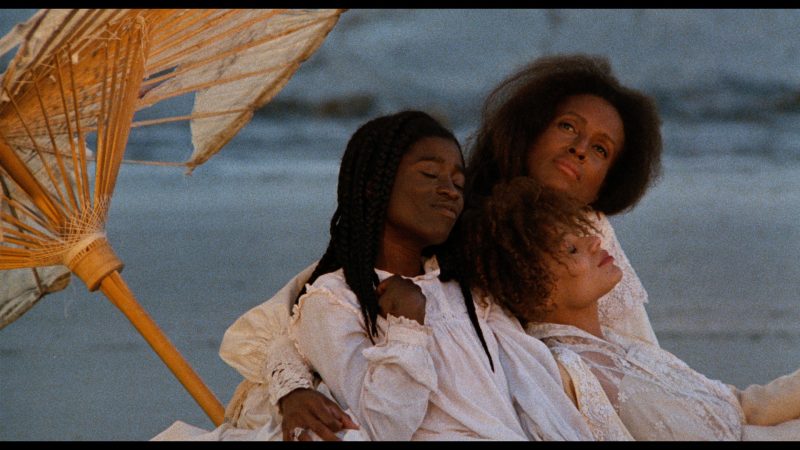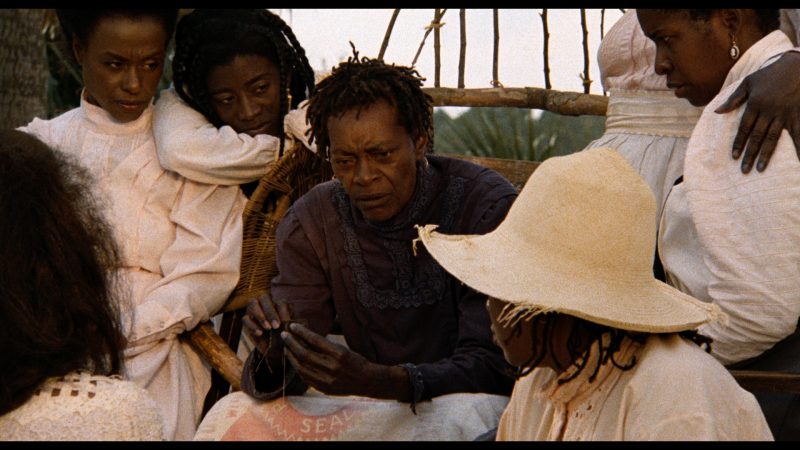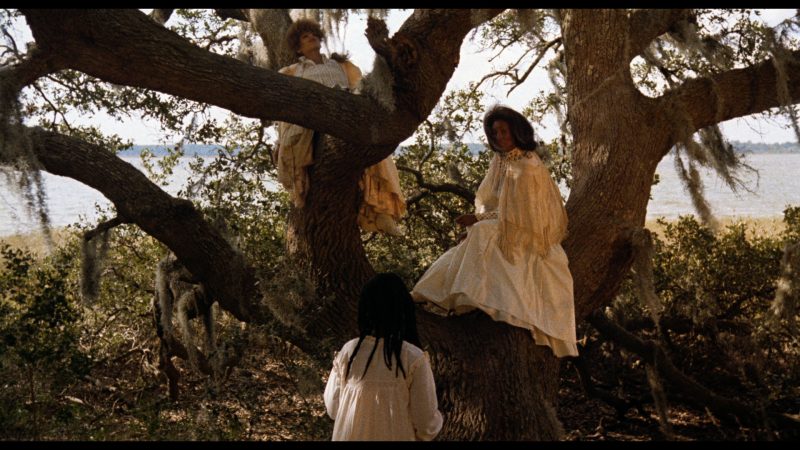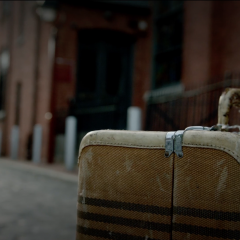
Leaving the island
Julie Dash’s “Daughters of the Dust” is a haunting story of a family torn apart by change. Set in 1902, the film unfolds at the sea island family Peazant’s reunion on the beach called Ibo Landing, where a younger generation talks of moving to the mainland and the older generation fights to stay. The beach is paradise but there’s trouble. A wife is pregnant with another man’s child, a sister returning from the North is a prostitute, another is a Christian religious fanatic. In a movie where characters play symbolic roles, these two returning sisters, shaped by their experience in the big cities, are cautionary examples of something pure having been tainted.

Nana Peazant, the matriarch, is a lightning rod for the conflict. Her spirit is tied to her African slave ancestors and to her island home. Loved by all and ridiculed by some for her spirit remedies and bottle trees, she will not leave. She is old but strong, a force like the sea, and like the sea, immoveable.
There is more plot in this 1991 movie, now restored and released on its 25th Anniversary, but mostly, this is a character study, focusing on family dynamics at the turn of the century when the Victorian age was ending and the new Industrial Age was beckoning people to the North and its cities. In fact the focus is mostly on the women in the matriarchal family. They are the characters that compel attention.
The movie is gorgeous–almost too picture-perfect, and the soundtrack of African, Middle Eastern and what seems like new-age music is haunting, a melange of old and new that speaks of traditions and rituals mostly gone. The film’s pacing intersperses scenes of argument, words of anger and conflict with slow-paced, dreamy, pastoral, music-fueled tableaus. And it’s the tableaus–children playing on the beach, women lounging in a tree–with their rich atmosphere and hypnotic music that hold the film together and act as counterbalance to the scenes of argument and anxiety.
Released to great acclaim in 1991, “Daughters of the Dust” is the first film by an African American woman to be given wide theatrical release. The poetic vision of a matriarchal society in decline is heartbreaking in its emotional honesty. Get ready to cry.

Gullah culture 25 years on
Julie Dash’s “Daughters of the Dust” chronicles a period of widespread social change through the lens of a single family. Through dreamy, haunting imagery that emphasizes a timeless landscape of marsh grass, palmetto trees, and pristine beaches, Dash’s film suggests that despite the changing times, the Gullah culture of the Sea Islands will remain rooted in place.
My own response to “Daughters of the Dust” was informed by my experience growing up in Charleston, in the SC Lowcountry, and seeing the changes wrought in the area through the twin threats of development and environmental degradation. The enduring traditions chronicled by Dash are sadly endangered, and the descendants of her “daughters of the dust” struggle to preserve their land and way of life. When I was a child, my mother and I used to stop and chat with the ladies who sat along the main streets of Charleston weaving sweetgrass baskets, a traditional craft depicted in Dash’s film. Nowadays, these baskets have been reduced to tourist kitsch, their high price tags a painful counterpoint to the systematic devaluing and displacement of Charleston’s African American residents, as Charleston artist Fletcher Williams III has articulated.
As the film shows, at the start of the twentieth century many people left their impoverished island home, where memories of slavery were all too close to the surface, in search of a better life in the North–or at least on the mainland. But many remained behind, and their descendants are now (in our current day) struggling to hold on to the property they fought so hard for following the Civil War. The South Carolina coast is rapidly developing as investors moving north from the now-saturated coasts of Florida seek fresh land for exclusive seaside developments–golf courses, condominiums, hotels, and gated communities. Since the release of Dash’s film in 1991, the population has ballooned from 80,000 to around 130,000. Not coincidentally, this population boom took place immediately following 1989’s Hurricane Hugo, which displaced many residents along the coast. The transformations I’ve seen in SC since Hugo struck when I was 8 are being played out now in New Orleans and Louisiana following the tragedy of Katrina.
The 2006 establishment of the Gullah-Geechee Heritage Corridor spanning the coast from Jacksonville, FL through Wilmington, NC represents an important step to preserving the land and culture of families like the Peazants. Life went on for the family members who chose to stay behind during the Great Migration, and I hope that the re-release of Julie Dash’s beautiful film will remind audiences that the Gullah traditions depicted in the movie are not dead, but still very much alive. The connection with the past, with the ancestors, that Nana Peazant held onto so tightly is still alive today–but only if we work to preserve the Gullah land, language, and culture.
By Flora Ward
For those interested in learning more about Gullah-Geechee culture, I recommend visiting the Penn Center on St. Helena’s Island, whose history stretches back to the days of the Civil War, through the Civil Rights movement when Martin Luther King Jr. spent time there, all the way to its use today as a center for the preservation of Gullah history and culture.
“Daughters of the Dust” opens December 9 at Landmark Cinema’s Ritz at the Bourse Cinema, 400 Ranstead Street.








